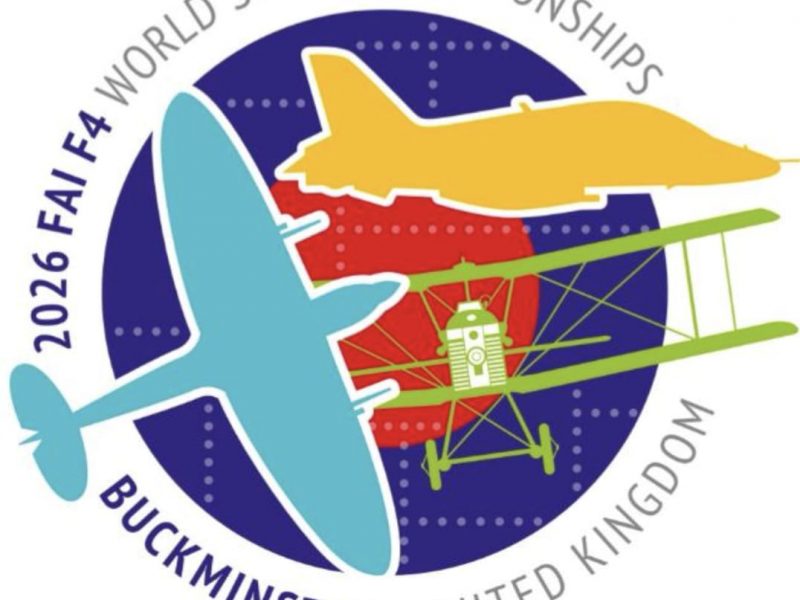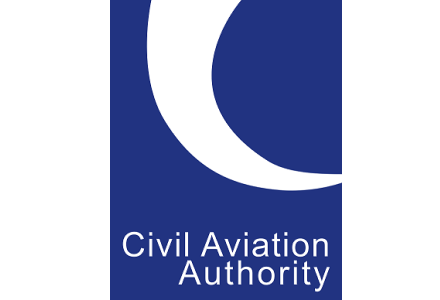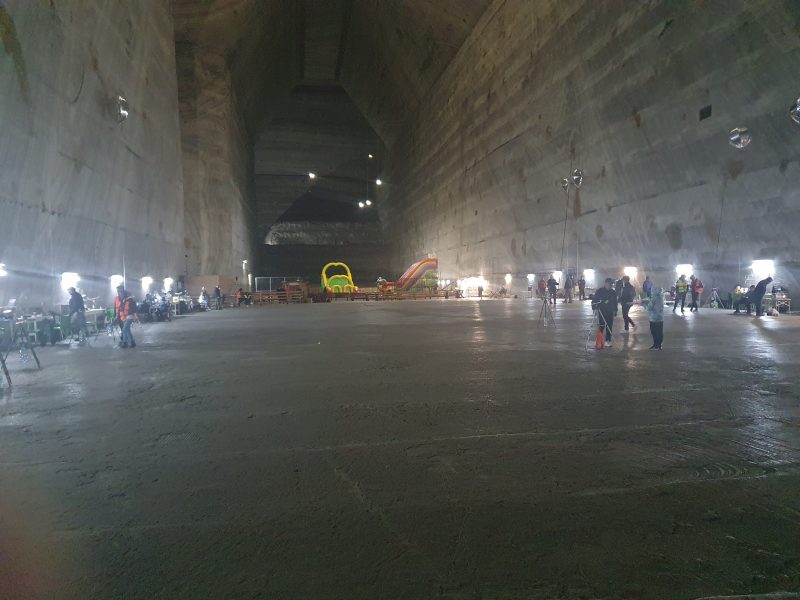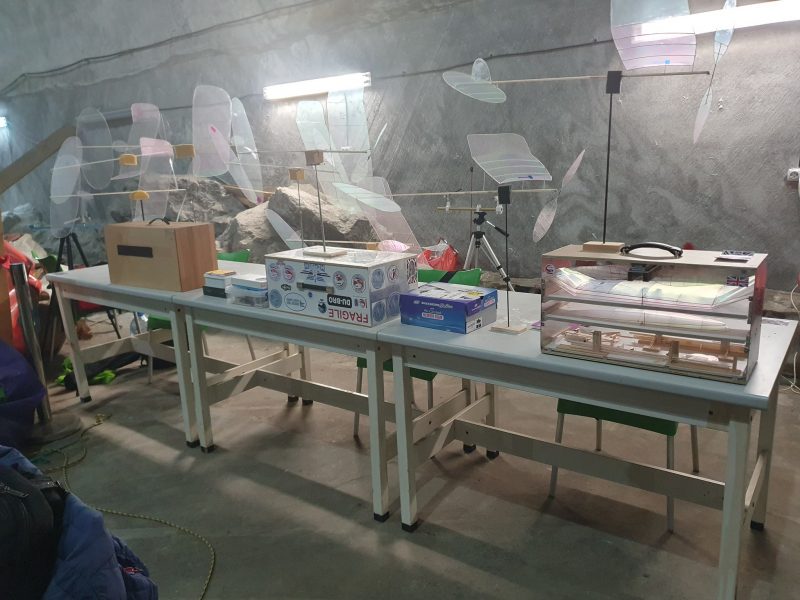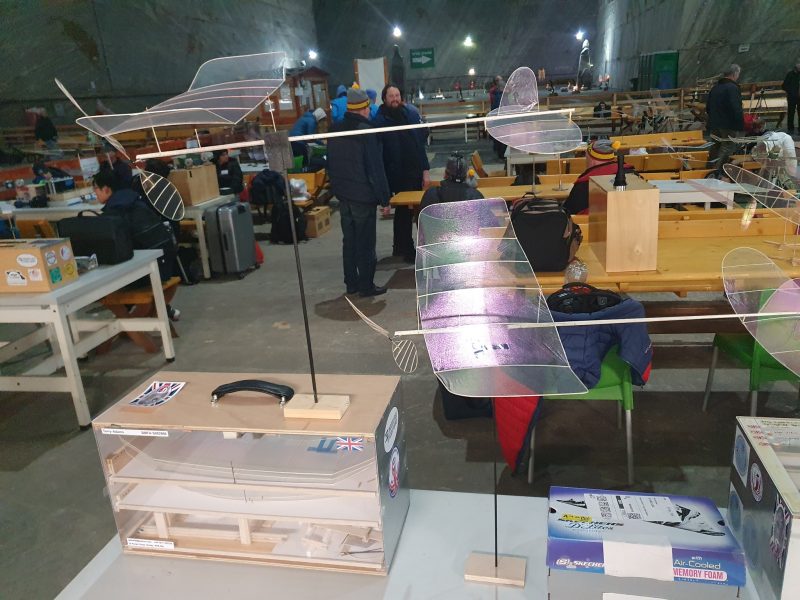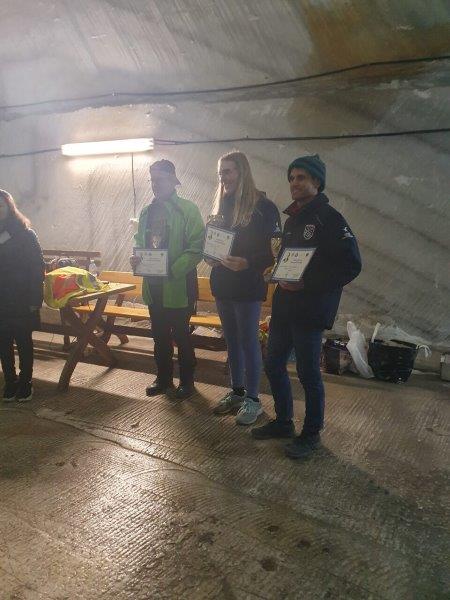Executive Officers
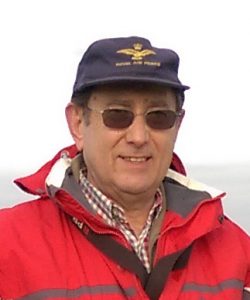 Ian Pallister, FSMAE
Ian Pallister, FSMAE
Ian’s interest in model aircraft started in 1960 with catapult-launched plastic toys and quickly progressed to the all sheet rubber-powered scale models from Yeoman and KeilKraft. He built his first single channel R/C model at the age of 12 and progressed through galloping ghost to a self-built proportional radio set bought with his first RAF pay packet in 1970. After gaining a degree in Aeronautics and Astronautics from Southampton University and 400 hours of pilot training he served for 26 years as an RAF Engineer Officer, leaving as a Wing Commander in 2004. He then embarked on a second career in the Civil Service as a training manager at the RAF College Cranwell where he was the RAF liaison Officer for model flying at Barkston Heath for several years before finally retiring in 2018.
Throughout 11 years as Chairman of the RAF Model Aircraft Association Ian sat on the BMFA Areas Council. During that time he competed in all disciplines flown by the RAFMAA as well as the BMFA Scale Indoor and Free Flight Nationals. He was National Champion in Scale CO2/Electric in 1988 and in Peanut in 1992.
Ian has judged R/C Scale flying since 1979 and, on retirement from the RAF, was co-opted onto the BMFA Scale Technical Committee to organize the Scale Indoor Nationals which he did for 5 years. Remaining on the Scale TC for 10 years he held the posts of Treasurer, Chairman and Council Delegate. He was elected Vice Chairman of the BMFA in November 2014 and took over as Chairman all too soon in October 2017 when his predecessor’s health deteriorated. Ian was elected as a Fellow of the Society of Model Aeronautical Engineers in 2017.
An active member of two BMFA Clubs as well as the RAFMAA, Ian’s primary competitive involvement remains Scale (R/C and Free Flight) but he enjoys all forms of R/C flying including thermal and slope soaring as well as an ongoing dabble with helicopters, multi-rotors and FPV.
Ian lives in Lincolnshire and is married with two grown-up children and two grand-children
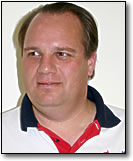 Keith Lomax, FSMAE
Keith Lomax, FSMAE
Keith served as Honorary Treasurer from 2003 until his election as Vice Chairman in 2022. Prior to that he was Area Delegate for the East Anglian Area in 1991 and BMFA Honorary Secretary from 1991 to 1996. He has also held committee posts at club and area level. He has undertaken various roles in relation to the Power Nationals including being coordinator in 1992 and famously running the bar from 1994 to 1998; helped out at the Free Flight Nationals for four years; manned the BMFA stand at many shows; and initiated the children’s DART workshops at the Model Engineers Exhibition.
Keith is married to Christine who also works at the Nats and on the stand, and has three adult stepsons (who also all work at the Nats, usually on the roping crew). Keith and Christine also have two dogs (George and Holly) who are known to quite a few members.
Keith’s model flying activities started with R/C Power fixed wing ‘club’ flying and have included indoor and a very poor attempt at scale.
Other interests include canal boat holidays, photography and anything to do with maintaining a house and the stepsons’ cars. Keith is a governor of a school for children with special educational needs.
When he has time to go to work, Keith is an internal auditor (like an accountant but more friendly and interesting) and specialises in auditing computer systems. Having worked for various multinationals, Keith currently works at Motability Operations, the company that operates Europe’s largest car fleet – providing a service to over 400,000 disabled people in the United Kingdom.
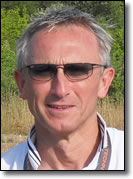 Duncan McClure
Duncan McClure
I have been an active modeller for over 40 years and I enjoy participation in many aspects of the hobby. I started off flying control line and free flight and then moved to RC, starting with a home built single channel radio. I now fly power sport, scale and aerobatics, glider (both slope and thermal), helicopters and more recently gas turbines and electric. My entire fleet is now exclusively electric or turbine.
For the last 36 years I have been a member of the White horse Model Club. I have served on the committee of this club for most of this period and have held most of the senior posts. I have been responsible for the development of training materials and have trained many members, both young and old, in power, glider and helicopter disciplines.
I have held power B and Club Examiner ratings since 1982 and I became an Area Chief Examiner in 2000. I have also been an Approved Instructor since the inception of the ‘up and away ‘scheme and a silent flight examiner since 1993. I am now also an Area Chief Instructor.
I also fly full size and hold a Private Pilots Licence (PPL A) with IMC and night ratings. I fly on a regular basis and have a share in Piper Cherokee based at a local airfield. I find full-size experience invaluable for model flying, particularly in relation to safety and training.
I worked for several years as a part time fixed wing flying instructor for ATS and the RC Hotel in Corfu, so I have gained valuable experience of training pilots of all ages and with a wide range of abilities, in both club and commercial environments.
For my day job I work as a radiation physicist for the government, and have been involved in notable incidents such as Chernobyl and the poisoning of Alexander Litvinenko with radioactive Polonium in 2006.
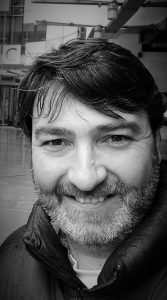 Mark Benns
Mark Benns
Mark Benns has remained an active member of the Peterborough Model Flying Club for over 38 years. He has held committee posts in the Indoor and Free Flight Technical Committees since 2005 as well as playing an active role in the procurement of the BMFA National Visitor Centre.
Married with two grown up children, Mark is a Chartered Architect running his own Practice and is also a Director of a Company developing large scale Combined Heat & Power projects.
A Free Flight aeromodeller since the age of 12 he has juggled his enthusiasm in both Indoor duration and outdoor competition. Mark recalls his first insight into aeromodelling was watching an RC glider demonstration at a local school fete, two weeks later he was hooked and a member of the Society.
He dabbled with RC slope soaring back in his University days in Sussex and has been dizzied by Control Line at Cabbage Patch Nationals but his real passion is flying hand launched gliders, rubber models and for the last 12 years Competing at National, European and World level in the Indoor class of F1D.
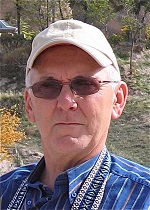 Mike Woodhouse, FSMAE
Mike Woodhouse, FSMAE
Mike has been involved in aeromodelling since the age of 8 and has flown control line and some radio control soarers. However his main love has been competition free flight mainly flying international class glider and rubber models.
Mike has some successes on both the home and international front and represented the UK at Championships in both F1A and F1B on several occasions. Mike has also managed the International team at 5 Championships and he hopes to carry on flying at the top level for a few more years.
Mike has been the chairman of the Free Flight Technical Committee since 2001 and also served as both the secretary and treasurer for the East Anglia Area committee and for the Vikings Free Flight Group.
Mike was awarded a BMFA fellowship on 2002 and in 2006 received the distinguished service award from The National Free Flight Society of America.
Free flight in the UK is relatively healthy considering the issues that surround the activity, that of an ageing membership and the pressure on flying sites. Over the past 12 years Mike has helped to steer and stabilise the situation. Mike has chaired the FFTC as they have developed and expanded links with SAM35 trying to make the BMFA Free Flight Nationals a bigger and better experience.
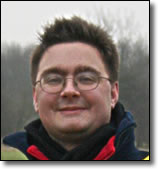 Simon Vaitkevicius
Simon Vaitkevicius
Simon lives in Spalding, Lincolnshire. His aeromodelling career started in 1993 when he became interested in thermal soaring and joined his local club, the South Lincs Soarers. With encouragement from his colleagues he became more proficient and started to fly competitively at a national level.
He has mainly flown flat field thermal competition models in the 100s, Open and sometimes F3J classes but has also dabbled with electric thermal soarers and electric scale models. He enjoys competition flying and in 2010 was fortunate to become BMFA 100s national champion.
Professionally, Simon is a Chartered Engineer and owns his own training company which educates Engineers nationally and internationally. He is also a Visiting Professor of Innovation at Bournemouth University and guest lecturer at London Southbank University and Brunel University.
Prior to owning his own organisation he worked at Nokia UK for 15 years as a Mechanical Engineer, working globally as a process trainer.
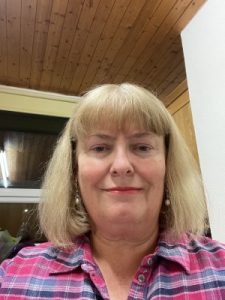 Helen Jones
Helen JonesHelen Jones has always had an interest in all forms of aviation and particularly liked visiting air museums and the occasional air show.However until 2004 she knew very little about aeromodelling until she met her husband who flies Control Line.It was through supporting and helping at both F2B and F2D events that she became aware of the importance of the BMFA and its role in promoting all forms of model sport flying.
Before retiring she worked as a Primary School Senior Leader in Leeds specialising in Mathematics, Special Educational Needs and Safeguarding. She has also been the Local Authority Governor for another Leeds primary school for the last fifteen years.
It is her aim to explore, develop and extend the BMFA's offer to young people so that they are enthused and inspired to join the BMFA and help shape the future of this amazing sport.
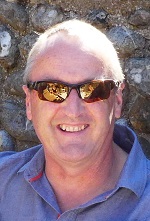
Paul Hoey
My working life revolved around education in one form or another as a teacher, youth and community worker and various management roles in Norfolk County Council where I concluded my career as Head of the County’s commercial education services. I served as a Trustee and Board Chair of a multi faceted substance misuse charity for 20 years until 2021 and I continue my involvement as a volunteer supporting people in recovery. I am also active in our local church.
Aeromodelling has been a thread throughout my life despite protracted diversions into sailing, windsurfing and ongoing cycling. Like many I built Keil Kraft models as a child with intermittent success and am now surprised that they fly much better than they did 50 years ago. Maybe I have learnt something over the years. I enjoy several disciplines and fly RC sport aerobatic models on a regular basis but my real interests are indoor scale and FF and small free flight sport models.
I am a member of the South Norfolk MFC where I am a club examiner and Impington Village College MAC. In this centenary year I am chair of the BMFA 100 planning group. The camaraderie and challenges of aeromodelling are important to me and therefore I like to be able to give something back to our great sport.
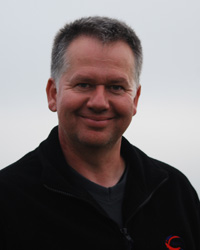
Dave Phipps
Dave has been a BMFA staff member since 2003, becoming CEO in 2005. He served as the Power Nationals Co-ordinator from 2010 until 2021. Dave is also General Secretary of the Royal Aero Club and a director of the General Aviation Awareness Council.
Dave has also served as Europe Air Sports Technical Officer for Unmanned Aircraft since 2015 and was a member of EASA’s Expert Group working on the finalisation of the EU regulations for unmanned aircraft.
In 2016, he was a founder member of the European Model Flying Union along with colleagues from the German, Austrian and Swiss Aero Clubs who came together to formalise support for his ongoing work with EASA on behalf of the wider model flying community. He was voted in for a third term as President in 2021. The EMFU currently represents 125,000 model flyers throughout Northern Europe.
Dave has been a member of the BMFA since 1983 and has flown gliders, fixed wing powered aircraft, helicopters and multi-rotors. He is a current member of the Shillito Wood Model Flying Group.
He lives on the edge of the Peak District in Derbyshire with his wife Janine and six horses. He has two grown up children. In his ‘spare’ time he is the long-standing Chairman of his local Parish Council and the Village Hall Committee.
Non Executive Directors
 Martyn Kinder
Martyn Kinder
I started aeromodelling when I was 13 years old – in 1969, before that I built model boats. I became a SMAE member in 1971 and started flying Free Flight contests as a Junior, mainly A/1 and A/2 (as it was then) classes. My first Model Flying club was Syke Juniors, near Rochdale.
I started flying RC gliders in 1980, as I was (at the time) fortunately living only 4 miles from one of the best slope soaring sites in NW England, Blackstone Edge, off the Rochdale to Halifax road and started R/C power flying shortly afterwards. However, I continued to fly competitive free flight as a member of Richmond DMAC until 1977 and latterly (following a change in location) Falcons Free Flight Team until 1995.
I had a few years off while my children got bigger but came back to the fold about 11 years ago flying mainly RC sports models.
I am the founder member and administrator of the UK Classic Aerobatic Association (UKCAA) which promotes the building, flying and competing of pre 1996 F3A Aerobatic aircraft and I am also a member of South Cheshire Radio Control Society, BARCS and the LMMGA. I am the club delegate for SCRCS.
My model flying interests are very broad ranging. I fly Classic F3A, R/C gliders, (Electric, Thermal and Slope) and general sports models. As I am getting older, I am getting more interested in scale modelling and enjoy the additional challenge of building and flying this type of model.
Professionally, I design IT systems for a major UK Government Department. I have worked in IT for over 40 years. Working in the Government sector means that you need to develop a very pragmatic and diplomatic approach to working with people. This is one of my strengths, over the years I have worked very closely with a great many civil servants to develop and deliver successfully, some complex and costly IT projects.
I have also been a committee member on many local and national bodies. In fact, I first started committee work as Junior Captain of a sailing club when I was just 14 years old. I have worked on a number of committees including the British Astronomical Association and the Radio Society of Great Britain plus many club roles over the past 40 years. I enjoy working on committees and feel the time spent is a worthwhile contribution and satisfactory payback for an interest that I enjoy doing,
I was appointed BMFA-NW Area Webmaster at the end of 2017 and subsequently elected (in 2018) as Area Delegate and Chairman of the NW Area of the BMFA following the resignation of David Lloyd Jones due to ill health.
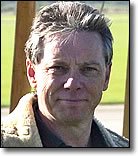 Stuart Willis
Stuart Willis
Born July 1955 in Carshalton. My father was an aircraft mechanic based at Croydon airport but was relocated to the new Gatwick airport so the family relocated to Crawley when I was just 16 months old.
My first venture into the world of model aircraft was at age 10 when I joined the School Aero Club then later in the Crawley Aero club and the SMAE, as it was then, flying control line combat models and free flight rubber models. My first model was a "Phantom Mite" constructed with the help of my father and the words that have been so true over the years: "If you built it, you can repair it".
I'm a Support Engineer for an international software house and sit behind a computer screen all day so enjoy getting out and flying whenever I can.
I got back into modelling in the late 1990's - first with helicopters and later moved on to fixed-wing models. I joined the Felbridge Flyers of which I'm an active member, being on the club’s committee as the ‘Webmaster’, as well as being one of the club’s fixed-wing instructors which I enjoy very much; seeing others being able to take to the skies on their own and enjoy the sport as much as I do is a very rewarding experience.
I fly mainly radio-controlled models, both IC and electric, and both fixed-wing and rotary. I enjoy building as much as I do flying, spending many hours in my shed tinkering with wood and glue - as my tolerant wife would testify!
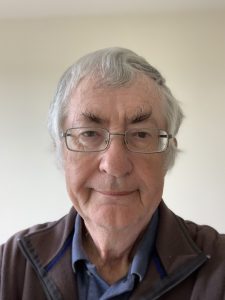 Allan Belcher
Allan Belcher
Born in 1948, I am married with three grown up children and two grand children. I was introduced to aeromodelling at a very early age by my father who was a keen woodworker and ex RAF. I started with Keil Craft rubber power and progressed to Jetex models. After joining Cardiff High school I moved on to control line and self stabilising ( pendulum control ) free flight which was not that effective! This made me look more seriously at Radio Control which was in those days single channel and really only one step beyond a free flight model. I built the Aeromodeller no1 receiver and transmitter and after much experimenting and reading of text books on electronics was finally able to make it work. I then progressed to constructing 12 channel reed transmitter and receivers which presented new challenges.
Unfortunately this spelt the end of my interest in Aeromodelling as I found solving the problems and designing and testing electronic systems very absorbing. This new knowledge proved to be of use in the newly formed South Wales Amateur Rocketry Group (SWARG) which was a consortium of secondary schools in Cardiff. My contribution to SWARG was in designing, constructing and testing the rocket and ground antennas and telemetry systems. SWARG had several successful flights until the government decided to stop allowing MoD facilities to be used for amateur rocket launches.
I then undertook a degree in Electronic Engineering with Physics and obtained my amateur radio transmitting licence. On graduating I joined the BBC Engineering Research Department. I was fortunate that my day to day work was of an advanced nature and over a two year period it facilitated a collaborative or external PhD in Electronic Engineering with Surrey University. At that time I had a young family with strong ties in Wales. We returned to Wales where I become a Medical Physicist at Velindre Hospital Cardiff. Later, in 1980 I become a Lecturer in Electronic Engineering at Swansea University. I was able to introduce aeromodelling related projects to final year students so this began the return to my hobby. I continued this theme when I later became a Professor in Electronic Engineering at Cardiff University.
In 2016 I left academia to become full time employed in my own research company. Then came Covid 19 which mean that I spent more time at home and I took the opportunity to focus on aeromodelling. This made me more aware of how relevant it was that Wales was actually a country with its own laws and Parliament. Laws in England allowed clubs in England to be open for flying but laws in Wales meant clubs there were closed. My academic and professional career had required me to be involved in many committees and I enjoyed the challenges that they presented.
I joined Swansea Model flying club in the mid 80s and passed my 'A' 1991. In 2021 I become a committee member of Swansea Model Flying club and in 2022 I became the Mid West Area Delegate. My aim is to improve communication between our clubs and BMFA and to look for grant funding opportunities which may arise. This is proving to be a challenge as the Area is split between two countries and two governments. As a resident of Wales it seems appropriate for me to use the access this gives me to the Welsh Government to explore how the BMFA can better support our clubs in Wales I am now practising for my 'B' certificate!
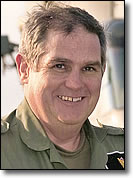 Peter Disney
Peter Disney
Peter currently lives in Brixham, Devon and is a Lieutenant Commander in the Royal Navy. He was educated in Torquay and at Imperial College, London and joined the Service in 1982 as a Seaman Officer, passing out from BRNC in 1983. After Fleet training and professional courses he moved on to be the Navigating Officer of HMS Kirkliston and then HMS Bereton before commencing flying training as an Observer in 1989.
Initially qualified on the Lynx Mk3 helicopter operating from Frigates and Destroyers, he held several appointments with 829, and 815 Naval Air Squadrons as the Flight Observer and then the Flight Commander including operations in the first Gulf War and the Mediterranean. In 1994 he became a Qualified Observer Instructor training Lynx Aircrew and as serving as the Operations Officer of 702 NAS based at RNAS Portland. After a final appointment back with 815NAS as the Type 23 Senior Flight Commander in HMS Somerset deployed to the South Atlantic he joined the Staff of Flag Officer Sea Training at Devonport in late 1997 as a Staff Warfare Officer conducting Aviation training at sea for RN and NATO warships.
In 1999 he returned to flying duties and completed a conversion course to the Merlin (EH101) helicopter at Westlands in Yeovil. The initial cadre of aircrew were based at RNAS Culdrose and charged with bringing the Merlin into Service and establishing the Merlin Training System which became 824 NAS later in 2000. As a Merlin instructor with specific responsibility for developing and accepting the simulators into service, he worked very closely with CAE, the contractor, in Canada to validate software and hardware and then oversaw the subsequent installation at Culdrose.
In 2002/2003 he was employed as the Senior Operations Watch-keeper working with the Coalition partners at the UK National HQ in Qatar for the war-fighting phase of Operation Telic in Iraq. On return to Culdrose and the Merlin he became the Senior Observer in 829 NAS, re-commissioning the Squadron in 2004 and using his Lynx sea experience in establishing links between the parenting organisation and the frigates. Since 2009 he has been back with FOST in Devonport training ships at sea.
Having started his modelling career with control line flying as a teenager in the 70s his first model was a Kiel Kraft plastic Hurricane. He progressed to built-up models and some free flight ducted fans, but drifted away from modelling when he went to college.
Returning to the hobby and R/C power flying in 2000 when he joined the Culdrose Model Flying Group, he became the Chairman of RNMAA and BMFA representative in 2007. In addition he is now also a member of several clubs in Devon and Cornwall and has been involved with the Devon and Cornwall Sub-Areas since 2009. He has held fixed wing ‘A’ Certificate since 2002 and was invited to fly before the full size aviation at Culdrose Air Display in 2006, so worked-up and successfully passed the ‘B’ that summer. He flies mainly larger R/C scale and semi-scale fun fighters at the summer shows, but is also very keen on EDF models, having designed and built several models of British aircraft from the 50s and 60s. He also dabbles in electric R/C (up to 200W size motors), rocketry (up to E Impulse) and indoor helicopters.
Area Delegates
Tony Waters
I have been Aeromodelling since the age of 12, starting with Control Line and moving into “Single Channel” radio at the age of 16, then onto Proportional Radio Control some 4 years later.
Many things have changed over the years, but the love for building and flying model aircraft is as strong as ever. Since I retired 11 years ago I have been able to spend much more time building and flying my models. I am a traditional balsa builder who loves to build from plans including WW2 scale where I post my builds on “ RCScaleBuilder.com” forum as YNOT-57. Over the years I have had all types of models from IC and Turbine but now I just use electric power for both Fixed Wing & Helicopter.
I have been a member of Raydon MAC for 30 years, and have served on the committee in a number of posts during this time, after a short illness which forced me to stand down from the committee, I am back to full health and now in the role of club Secretary once again.
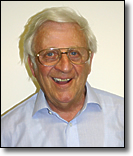 Martin Dilly, FSMAE
Martin Dilly, FSMAE
Started modelling in 1943 with an Airyda Blackburn Skua after first smelling doped fabric and ply and proper aromatic high octane fuel coming from rows of Whitleys and Hotspur gliders at RAF Hartford Bridge. Joined West Kent MFC and SMAE in 1948; flying in competitions ever since. Joined Croydon & DMAC in 1949, flying C/L aerobatics, speed, combat, a little R/C (bang-bang rudder), flew early R/C slope soaring in 1960s, moved on to concentrate on F/F, mainly international class F1A gliders.
Learned to glide at Detling, 1951 and to fly at Redhill and Croydon on Magisters and Tiger Moths in 1953 via a Flying Scholarship. RAF 1956-58 on ground radar, just missing Suez.
Having several expatriate New Zealanders in the Croydon club led to a long involvement with the NZMAA, first as proxy flyer and team manager at F/F World Champs, starting with Kauhava in 1965 and as NZ delegate to CIAM since about 1970. I was made a life member of NZMAA in 1987. Other CIAM work has included chairing the Information & Education Committee and serving on several International FAI juries at World and European Championships. Managing the UK teams at World and Euro F/F Championships from 1980 to 2003 with a couple of years off makes me probably the next most experienced of the species after Viktor Eskov of the USSR and Russia.
In parallel with this has been a lot of BMFA work, with an emphasis on the public relations side and the removal of inter-disciplinary blinkers, and work since 1970 towards Sports Council recognition of model flying, finally achieved about 25 years later. Despite 35 years as a TV cameraman for the BBC, Dilly Towers has always managed to avoid having a resident TV set, which may account for finding the time for it all. ‘All’ has included writing the Free-Flight and Foreign Flyers columns in Aeromodeller magazine for a period, co-founding Free Flight News, serving as BMFA PRO for two periods, editing and producing the SMAE newsletter, doing part of a TV series on modelling that still gets shown 20 years later, much to peoples’ amusement, representing BMFA on the Royal Aero Club Council, producing, editing and marketing most BMFA Free Flight Forum Reports annually since 1985, organising the Free Flight Forums, writing a couple of books on model flying, serving as London Area PRO since 1965 and as Council delegate since 1970.
I was also heavily involved in the landmark Bromley public enquiry on model flying at a local park in the early 1970s, and in drafting the Home Office Code of Practice on Noise Limitation for Model Aircraft in 1970s. I was elected a Fellow in 1977 and received the Royal Aero Club silver medal in 1992. Current flying activity focuses on F1A, where the building of some carbon bunters and ‘Russian rod’ line has led to far more consistent towing and helped to compensate for the possible lack of launch energy at the bottom end of the towline. Other interests include jazz, baroque music, Eastern Europe and food.
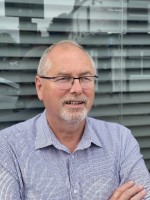 Steve Mason
Steve Mason
I started model flying at the age of 8 with a Keil Kraft Cadet that was made for me by my Uncle. My Father, Uncle and I used to fly free flight gliders, control line and radio in a grass field in Spalding, South Lincolnshire.
When I left school in 1971, I went to work for GEC Telecoms in Coventry as a Trainee Installation Engineer, installing and commissioning telephone exchanges all over the country. I eventually moved into System X Development. This led to me leaving the hobby for a period as I used to live away from home. Squash and water-skiing took over as my main interest and I built 2 boats during this period the last one was a 16ft speed boat with a V6 PPJet propulsion unit. It was in the early eighties that my interest was reignited and I joined the Bournestormers Model Club (in Bourne Lincs). I have fulfilled many roles within the club and am now the Vice Chairman. My arm was twisted by the late Mike Goldby into becoming a Club Examiner and was then persuaded into becoming an Area Chief Examiner and Area Chief Instructor by the Club Chairman at the time. Since then I have been appointed Midland Area Delegate and agreed to take over from Alan Penn as Achievement Scheme Coordinator for the Midland Area. I have held both positions for several years.
I left GPT (formally GEC Telecoms) in 1996 to start a new career by taking over an electrical, lighting and model supply shop in Spalding. Over the years, the store gradually become more of a ‘model shop’ and we are now in the process of manufacturing our own range of RC aircraft model kits.
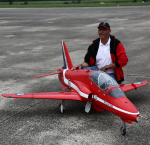 John McNamara
John McNamara
Age: 68, Married with two children and 4 grandchildren, Lives in West Yorkshire.
Occupation: Semi Retired, Owner of JettstreamUK
Previous occupation prior to retirement: UK Sales Director, Meiller GHP, Paragon Group.u
Career synopsis: 39 years as a print sales professional. Prior to this a Service Engineer for 3M Business Equipment Division.
Further Education: Electronic and Mechanical Engineering.
Modeller since the age of 7, building plastic models and free flight gliders and rubber powered models. Later at secondary school built free flight A1 and A2 gliders with a school friend. Dabbled in Electronics & photography too. At 13, I joined the ATC where my modelling education proper began. I was soon building control line stunt and combat models. Our squadron had a C/L Stunt demonstration team which displayed at local air shows and country fairs. I was taught to fly radio control at the age of 14.
I had learned to fly full size gliders in the ATC and continued whilst in full time further education. Modelling took something of a back seat during this time, but once I was at work, I began to build several slope soarers and a couple of power models. I joined the West Yorkshire Model Flying Club at this time. In the late 70’s I began to be interested the possibilities of electric flight. After a great deal of failure, I put my education to work to build better performing equipment Such as inverter battery chargers and Electronic Speed Controllers, as well as rewinding motors to serve as prime movers.
By the early 1980’s I had several successful electric powered gliders and powered aerobatic models. All these items are taken for granted these days and are readily available. I was always interested in scale models and started building scale gliders and powered scale models. Several where own designs, with mixed success. In the late 1990’s I became interested in Ducted Fans and built several models of this type. I made a lot of new friends at this time, most of which are still close fiends now, but some are passed, but not forgotten. After finally finding my stride in ducted fan, turbo jet engines appeared on the scene. For the last 20 + years I have spent most of my spare time pursuing jet flying. In 2003, with a close friend we founded the Elvington Model Flyers, a specialist club for Jet flyers. I am honoured to be the chairman of this club.
I have also severed several periods on the committee of the West Yorkshire club and that is my current position.
In 2019 I was asked if I would help the Northern Area which was very short of members. I then took on the role of Delegate for the Northern area. Subsequently I volunteered to work with a group of members from different areas to examine the purpose and direction of the BMFA areas. We have worked on a revised, updated and more relevant constitution for the BMFA areas as well as a revised guide to the constitution.
I continue to be a life-long modeller, flying jets, gliders, scale and electric. I plan to dabble in multi-cylinder petrol-powered scale shortly too. There is always something new to learn and new challenges to overcome
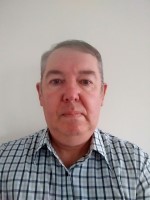 Gary Armstrong
Gary Armstrong
I was born in Northumberland in November 1963 and grew up and still live in Newcastle upon Tyne. Aeromodelling in one form or another has been a part of my life since the age of 8 or 9 when my grandfather presented me with a beautifully built KeilKraft Gypsy rubber model. This led to frequent trips to Newcastle Town Moor on a Sunday afternoon to fly it and to watch the antics of the local R/C fliers. I became hooked and spent the next few years building Airfix models and as my skills improved progressed to KeilKraft flying scale rubber models, free flight gliders and eventually control line. Christmas 1976 brought my first two channel 27mHz radio and after a couple of false starts when the local “expert” crashed my trainer, I taught myself to fly on a 100” thermal soarer. More power models followed, all two channel which if nothing else was great practice for landing from unusual situations as I was never quite sure when they would run out of fuel. I joined the newly formed Newcastle Model Flying Association in the spring of 1980 and have been a member ever since, it was soon after joining that I was introduced to precision aerobatics (F3A) and with a new six channel radio I set about learning as many of the manoeuvres as possible, before starting to fly competitively with the GBRCAA. I passed my BMFA “B” in the mid 1980’s and became a club instructor and examiner soon after, and in 1991 I was invited to become an Area Chief Examiner, a post I still hold today. I have been involved with the North East Area since 1986 when I was appointed club delegate for the Newcastle MFA, and initially served on the Area committee as the R/C discipline secretary. Subsequently I served as Area Vice-Chairman and currently I’m the Area Secretary, Delegate, and Achievement Scheme Coordinator. Although I no longer fly competitively, I still do some occasional judging at aerobatic competitions, and now fly large scale aerobatics, large warbirds and a variety of scale and non-scale slope soarers.
As mentioned earlier aeromodelling has been a large part of my life and most of my working life has been in the model trade, starting with a Saturday job in “The Model Shop” on Blenheim Street in Newcastle, and then over 30 years with “Phills Models”, first in Heaton and then in North Shields, with a couple of years at Glens Models in Renfrew in between. I now work a couple of days a week with the team at FighterAces.
 Martyn Kinder
Martyn Kinder
I started aeromodelling when I was 13 years old – in 1969, before that I built model boats. I became a SMAE member in 1971 and started flying Free Flight contests as a Junior, mainly A/1 and A/2 (as it was then) classes. My first Model Flying club was Syke Juniors, near Rochdale.
I started flying RC gliders in 1980, as I was (at the time) fortunately living only 4 miles from one of the best slope soaring sites in NW England, Blackstone Edge, off the Rochdale to Halifax road and started R/C power flying shortly afterwards. However, I continued to fly competitive free flight as a member of Richmond DMAC until 1977 and latterly (following a change in location) Falcons Free Flight Team until 1995.
I had a few years off while my children got bigger but came back to the fold about 11 years ago flying mainly RC sports models.
I am the founder member and administrator of the UK Classic Aerobatic Association (UKCAA) which promotes the building, flying and competing of pre 1996 F3A Aerobatic aircraft and I am also a member of South Cheshire Radio Control Society, BARCS and the LMMGA. I am the club delegate for SCRCS.
My model flying interests are very broad ranging. I fly Classic F3A, R/C gliders, (Electric, Thermal and Slope) and general sports models. As I am getting older, I am getting more interested in scale modelling and enjoy the additional challenge of building and flying this type of model.
Professionally, I design IT systems for a major UK Government Department. I have worked in IT for over 40 years. Working in the Government sector means that you need to develop a very pragmatic and diplomatic approach to working with people. This is one of my strengths, over the years I have worked very closely with a great many civil servants to develop and deliver successfully, some complex and costly IT projects.
I have also been a committee member on many local and national bodies. In fact, I first started committee work as Junior Captain of a sailing club when I was just 14 years old. I have worked on a number of committees including the British Astronomical Association and the Radio Society of Great Britain plus many club roles over the past 40 years. I enjoy working on committees and feel the time spent is a worthwhile contribution and satisfactory payback for an interest that I enjoy doing,
I was appointed BMFA-NW Area Webmaster at the end of 2017 and subsequently elected (in 2018) as Area Delegate and Chairman of the NW Area of the BMFA following the resignation of David Lloyd Jones due to ill health.
 Duncan McClure
Duncan McClure
I have been an active modeller for over 40 years and I enjoy participation in many aspects of the hobby. I started off flying control line and free flight and then moved to RC, starting with a home built single channel radio. I now fly power sport, scale and aerobatics, glider (both slope and thermal), helicopters and more recently gas turbines and electric. My entire fleet is now exclusively electric or turbine.
For the last 36 years I have been a member of the White horse Model Club. I have served on the committee of this club for most of this period and have held most of the senior posts. I have been responsible for the development of training materials and have trained many members, both young and old, in power, glider and helicopter disciplines.
I have held power B and Club Examiner ratings since 1982 and I became an Area Chief Examiner in 2000. I have also been an Approved Instructor since the inception of the ‘up and away ‘scheme and a silent flight examiner since 1993. I am now also an Area Chief Instructor.
I also fly full size and hold a Private Pilots Licence (PPL A) with IMC and night ratings. I fly on a regular basis and have a share in Piper Cherokee based at a local airfield. I find full-size experience invaluable for model flying, particularly in relation to safety and training.
I worked for several years as a part time fixed wing flying instructor for ATS and the RC Hotel in Corfu, so I have gained valuable experience of training pilots of all ages and with a wide range of abilities, in both club and commercial environments.
For my day job I work as a radiation physicist for the government, and have been involved in notable incidents such as Chernobyl and the poisoning of Alexander Litvinenko with radioactive Polonium in 2006.
 Stuart Willis
Stuart Willis
Born July 1955 in Carshalton. My father was an aircraft mechanic based at Croydon airport but was relocated to the new Gatwick airport so the family relocated to Crawley when I was just 16 months old.
My first venture into the world of model aircraft was at age 10 when I joined the School Aero Club then later in the Crawley Aero club and the SMAE, as it was then, flying control line combat models and free flight rubber models. My first model was a "Phantom Mite" constructed with the help of my father and the words that have been so true over the years: "If you built it, you can repair it".
I'm a Support Engineer for an international software house and sit behind a computer screen all day so enjoy getting out and flying whenever I can.
I got back into modelling in the late 1990's - first with helicopters and later moved on to fixed-wing models. I joined the Felbridge Flyers of which I'm an active member, being on the club’s committee as the ‘Webmaster’, as well as being one of the club’s fixed-wing instructors which I enjoy very much; seeing others being able to take to the skies on their own and enjoy the sport as much as I do is a very rewarding experience.
I fly mainly radio-controlled models, both IC and electric, and both fixed-wing and rotary. I enjoy building as much as I do flying, spending many hours in my shed tinkering with wood and glue - as my tolerant wife would testify!
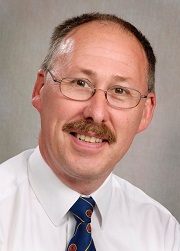 David Smith
David SmithI am a retired NHS consultant anaesthetist wishing to give something back to aeromodelling now that I have a bit more time available.
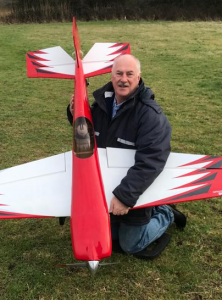 John Harris
John Harris
At Club level I have been a member of the Bristol Radio Controlled Model Aircraft Club Committee since 1997. I have represented the BRCMAC at BMFA Western Area committee from 2002 to now. I have held the position of Western Area Treasurer from 2006 until last year, as well as being the Western Area Secretary from June 2008 till 2011. I am also the Area Vice Chairman. I have also represent the Western Area as Area delegate to Full and Areas Council. I am a Chartered Engineer (CEng) and Fellow of the Institute of Engineering and Technology.
I have flown a wide variety of aircraft. I currently own a fleet of more than 20 aircraft, most of which I have built. These aircraft range from (Fixed wing) small electrics to a large IC/Petrol powered aircraft; (Helicopters) from a few indoor electric to several IC powered 30 models the largest being a Raptor 60. I have owned a few (flown many) jet powered fixed wing aircraft starting off with the faithful Boomerang to, whilst in the US, F16 Hornets. My current hack is a Chris Foss AcroWot XL, and for Multi Rotor FPV DJI Mavic.
I became a Club Fixed wing instructor in 2002 and a BMFA Fixed Wing Examiner during 2003. I passed the BMFA Fixed Wing Approved Instructor qualification in Apr 2004 (Became QI in 2007). I have been head of my Club Flight training since 2005. I became a registered BMFA Registered Club Helicopter Instructor in March 2007. In June 2010 I became an Area Chief Examiner/Instructor for the Western Area. Following attendance at a Jet C Examiners workshops now examine Jet candidates (one of which was the current world champion!) I have held and continue to support the Western Area Examiner/Instructor workshop, and intend to put on/support many more. I have supported the ASRC Conferences, and recently the Roadshows, The summer online variants presenting the “Running an Examiner/Instructor Workshop” material.
In the past I supported several helicopter Examiner workshops run by the then RC Power Achievement Scheme Controller. In the Western Area I have organised 15 Fixed Wing/Helicopter Chief Examiner/Instructor and Club Examiner/Instructor workshops aimed at ensuring ACE/Is and Examiners/Instructors in the Area are made aware of changes to the Achievement Scheme as well as bring Examiners to the same level of understanding of pass/fail criteria when conducting AS tests. The Examiner workshops are also very useful in providing practical feedback to the ASRC. I have been an active member of the ASRC since 2005. I am also actively involved with multi-rotor and FPV training.
 Allan Belcher
Allan Belcher
Born in 1948, I am married with three grown up children and two grand children. I was introduced to aeromodelling at a very early age by my father who was a keen woodworker and ex RAF. I started with Keil Craft rubber power and progressed to Jetex models. After joining Cardiff High school I moved on to control line and self stabilising ( pendulum control ) free flight which was not that effective! This made me look more seriously at Radio Control which was in those days single channel and really only one step beyond a free flight model. I built the Aeromodeller no1 receiver and transmitter and after much experimenting and reading of text books on electronics was finally able to make it work. I then progressed to constructing 12 channel reed transmitter and receivers which presented new challenges.
Unfortunately this spelt the end of my interest in Aeromodelling as I found solving the problems and designing and testing electronic systems very absorbing. This new knowledge proved to be of use in the newly formed South Wales Amateur Rocketry Group (SWARG) which was a consortium of secondary schools in Cardiff. My contribution to SWARG was in designing, constructing and testing the rocket and ground antennas and telemetry systems. SWARG had several successful flights until the government decided to stop allowing MoD facilities to be used for amateur rocket launches.
I then undertook a degree in Electronic Engineering with Physics and obtained my amateur radio transmitting licence. On graduating I joined the BBC Engineering Research Department. I was fortunate that my day to day work was of an advanced nature and over a two year period it facilitated a collaborative or external PhD in Electronic Engineering with Surrey University. At that time I had a young family with strong ties in Wales. We returned to Wales where I become a Medical Physicist at Velindre Hospital Cardiff. Later, in 1980 I become a Lecturer in Electronic Engineering at Swansea University. I was able to introduce aeromodelling related projects to final year students so this began the return to my hobby. I continued this theme when I later became a Professor in Electronic Engineering at Cardiff University.
In 2016 I left academia to become full time employed in my own research company. Then came Covid 19 which mean that I spent more time at home and I took the opportunity to focus on aeromodelling. This made me more aware of how relevant it was that Wales was actually a country with its own laws and Parliament. Laws in England allowed clubs in England to be open for flying but laws in Wales meant clubs there were closed. My academic and professional career had required me to be involved in many committees and I enjoyed the challenges that they presented.
I joined Swansea Model flying club in the mid 80s and passed my 'A' 1991. In 2021 I become a committee member of Swansea Model Flying club and in 2022 I became the Mid West Area Delegate. My aim is to improve communication between our clubs and BMFA and to look for grant funding opportunities which may arise. This is proving to be a challenge as the Area is split between two countries and two governments. As a resident of Wales it seems appropriate for me to use the access this gives me to the Welsh Government to explore how the BMFA can better support our clubs in Wales I am now practising for my 'B' certificate!
 Peter Disney
Peter Disney
Peter currently lives in Brixham, Devon and is a Lieutenant Commander in the Royal Navy. He was educated in Torquay and at Imperial College, London and joined the Service in 1982 as a Seaman Officer, passing out from BRNC in 1983. After Fleet training and professional courses he moved on to be the Navigating Officer of HMS Kirkliston and then HMS Bereton before commencing flying training as an Observer in 1989.
Initially qualified on the Lynx Mk3 helicopter operating from Frigates and Destroyers, he held several appointments with 829, and 815 Naval Air Squadrons as the Flight Observer and then the Flight Commander including operations in the first Gulf War and the Mediterranean. In 1994 he became a Qualified Observer Instructor training Lynx Aircrew and as serving as the Operations Officer of 702 NAS based at RNAS Portland. After a final appointment back with 815NAS as the Type 23 Senior Flight Commander in HMS Somerset deployed to the South Atlantic he joined the Staff of Flag Officer Sea Training at Devonport in late 1997 as a Staff Warfare Officer conducting Aviation training at sea for RN and NATO warships.
In 1999 he returned to flying duties and completed a conversion course to the Merlin (EH101) helicopter at Westlands in Yeovil. The initial cadre of aircrew were based at RNAS Culdrose and charged with bringing the Merlin into Service and establishing the Merlin Training System which became 824 NAS later in 2000. As a Merlin instructor with specific responsibility for developing and accepting the simulators into service, he worked very closely with CAE, the contractor, in Canada to validate software and hardware and then oversaw the subsequent installation at Culdrose.
In 2002/2003 he was employed as the Senior Operations Watch-keeper working with the Coalition partners at the UK National HQ in Qatar for the war-fighting phase of Operation Telic in Iraq. On return to Culdrose and the Merlin he became the Senior Observer in 829 NAS, re-commissioning the Squadron in 2004 and using his Lynx sea experience in establishing links between the parenting organisation and the frigates. Since 2009 he has been back with FOST in Devonport training ships at sea.
Having started his modelling career with control line flying as a teenager in the 70s his first model was a Kiel Kraft plastic Hurricane. He progressed to built-up models and some free flight ducted fans, but drifted away from modelling when he went to college.
Returning to the hobby and R/C power flying in 2000 when he joined the Culdrose Model Flying Group, he became the Chairman of RNMAA and BMFA representative in 2007. In addition he is now also a member of several clubs in Devon and Cornwall and has been involved with the Devon and Cornwall Sub-Areas since 2009. He has held fixed wing ‘A’ Certificate since 2002 and was invited to fly before the full size aviation at Culdrose Air Display in 2006, so worked-up and successfully passed the ‘B’ that summer. He flies mainly larger R/C scale and semi-scale fun fighters at the summer shows, but is also very keen on EDF models, having designed and built several models of British aircraft from the 50s and 60s. He also dabbles in electric R/C (up to 200W size motors), rocketry (up to E Impulse) and indoor helicopters.
Peter Edmondson
I’ve held an interest in aeromodelling from a very early age while growing up in the countryside of Northern Ireland. Helped by Dad, my elder brother used to build free flight, doped gliders. We were fortunate that we could launch them from the house and then run across the fields to get them back. These days, I occasionally fly electric gliders from the same place.
I was able to get involved in R/C when I was gifted a 3ch Yamamoto and SC46 at Christmas, aged 11 years old. We built it in the roof space and come Spring-time 1993, Dad took me to join the Ulster Model Aircraft Club (UMAC)
There was a long period when I stopped flying between 2000 and 2014 but when I eventually returned, I quickly rekindled a dormant passion for aeromodelling. Flying fixed-wing, I mostly enjoy models in the 20cc petrol or 6s electric range. Along the way, I’ve had my fair share of mixed fortune..
In late 2017 I started flying Helicopters and have worked progressively on learning 3D. I’ve participated in the 2021 & 2022 UK 3D Masters at Buckminster but I still love flying powered fixed-wing and the occasional big slow glider too.
In 2018, the Northern Ireland Association of Aeromodellers (NIAA) appointed me as area Treasurer and in 2021 I was appointed as Area Delegate.
This year, I am delighted to see the return of events back to the Northern Ireland calendar. I felt the absence of these events over 2020-21 left a huge void for many of us who enjoyed traveling to local events. This year, we have been able to resume a normal calendar and get events up and running again.
I look forward to being able to represent and support the membership clubs here in Northern Ireland.
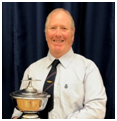 Ian Nelson
Ian Nelson
A retired RAF Warrant Officer, Ian spent 37 years as an Aircraft Propulsion Technician which encompasses, aircraft engines, aircraft fuel systems, fuel pressurisation and fire protection. He has worked primarily on Vulcan B2, C-130 Hercules, Jaguar GR1A, Puma HC1 helicopter, Tornado GR4A and handled a multitude of aircraft including Nimrod MR1, Buccaneer, Canberra, Shackleton MR2, Starfighter and Boeing 737 to name a few. During his service he has visited many extreme environments from the Arctic of Northern Norway to heat of the Arabian Peninsular and Afghanistan. He was awarded the British Empire Medal (BEM) in the Queen's Birthday Honours list in 1986, for service to the RAF community in Gibraltar and restoring the Gate Guardian, a Vulcan B2 from his first operational squadron, 35 Squadron.
Ian started his modelling career when he was 10 years old (1966) with Keil Kraft rubber-powered scale series aircraft. When he was 11 he flew a friend's plastic Keil Kraft Hurricane. He only lasted a couple of laps before he got dizzy and crashed it breaking the nylon engine mount. That cost him 7s 6d (37 1/2 p), three weeks pocket money in those days! Needing something more robust he built a Slick Schick combat wing from the Model and Allied Publications (MAP) plans service and powered it with a second-hand DC Sabre 1.5 cc diesel. At last, an aircraft that would bounce! He continued with Control Line for many years concentrating on Combat, Stunt and Scale. Indeed, at the tender age of 15, he built a MAP F4U-4 Corsair and entered it at the North West Area Rally at Woodford in Cheshire; he came 6th out of 20 contestants. He joined the RAF in 1973 and enrolled in RAFMAA in 1978 whilst at RAF Scampton, here he continued to fly Control Line with a Mercury Crusader and a plan built DH Mosquito.
In 1980 he bought his first RC set, a Fleet Custom III and a three channel trainer (Sancho). He taught himself to fly at RAF Halton, many front firewalls, undercarriages and a few pounds of epoxy later he eventually got the hang of it all. He took a three year break whilst at RAF Gibraltar due to extreme RADHAZ problems for RC gear and other diversions (see above). Returning to UK he dusted down his kit and started flying again at the RAF St Athan Club.
Immersing himself back into the hobby he started to fly aerobatics whilst at RAF Coltishall and passed his 'A' certificate (1992). He gained his ‘B’ certificate in 1997 becoming an Examiner in 2000. He has been Officer In Charge (OIC) RAFColtishall, RAF Benson and RAF Marham Model Aircraft Clubs. Additionally in RAF Model Aircraft association (RAFMAA), he has held the positions of; Secretary, Competition Secretary, Indoor Secretary, RC Power Secretary; again, sometimes all at the same time. He is currently one of RAFMAA's Chief Examiners and the Area Coordinator and an Honorary Member since retiring from his ‘day job’ in 2011. He became BMFA Representative for RAFMAA in 2016. Within RAFMAA he has been successful in winning a number of competitions in a number of disciplines and has held the Honorary Members Trophy for two years.
His civilian club for the past 30 years has been the North Norfolk Aeromodellers (NNA) where he has held the positions of Chairman, Treasurer and Secretary, sometimes all at the same time! He is currently Vice Chairman of the NNA. Over the years he has taught many people to fly RC and Control Line and examined candidates within the NNA and RAFMAA; one ‘A’ certificate being conducted on Ascension Island!
Ian still occasionally flies Control Line models; Stunt, Combat wings and Mini-Goodyear racers but, channels most of his time into RC Aerobatics and Scale. He has flown in displays with the RAFMAA team, namely Wings and Wheels, Old Warden and Ascension Island he can often be found flying in Warbird events. Additionally, Ian also enjoys Slope and Thermal soaring.
Technical Committee and Other Delegates
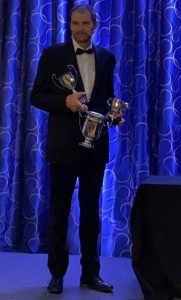 Simon Dixon
Simon Dixon
I have been building and flying free flight models since I was a small boy initially under the guidance of my late father and his club mates. I started off with various Keil Kraft kits, the Ajax and the Senator rubber models being my favourites, progressing to St Leonards kits Performer rubber models and Satellite and Astaroid Gliders - these were much better and and could be regarded as competition models, the fact that their designer Jim Baguley was a club mate made it all the more special.
So, as a teenager an engineering apprenticeship beckoned as well as both swimming and playing cricket competitively for my town my interest in free flight never waned. I built a few open rubber models, F1G’s and F1B’s as well as a couple of straight tow F1A gliders (which I never really got the hang of but still fancy a go).
Around 15 years ago I switched disciplines to fly power models and something clicked, in so much as I seemed to be better at building and flying them than I ever was with the rubber models and gliders. I now fly pretty much all UK power classes and the pinnacle of my aero modelling career to date was an F1C Bronze team medal with Ken and Alan at the 2017 World champs in Hungary.
High tech modern construction methods appeal to me, although I do buy what I cant make (or don't fancy making) including complete models on occasion. Having said that I love classic power models from the 50’s, 60’s, 70’s and 80’s, I find making a balsa / tissue model most enjoyable and fun to fly.
My latest team place is for the 2022s European championships in North Macedonia.
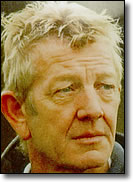 Vernon Hunt, FSMAE
Vernon Hunt, FSMAE
An accidental Xmas present in 1963, a Wen-mac control -line model (which never flew) was my introduction to model flying. Despite the disaster with the Wen-mac, I joined a local flying club in Heanor on the understanding that the club flew competitions in control-line combat and everyone was expected to follow, despite their own standard of flying.
This proved to be a rapid learning curve and by 1965 I was competitive, finishing 5th, or second reserve for the criterium of aces (European Champs). Between 1969 and 1984 I flew as a regular UK team member in the European and World Championships, bearing in mind that the first official control line World Champs in F2D was not until 1978.
I achieved three Nationals wins - 1969, 1970 and 1979 and a European Championships in 1980. The significant thing for me when flying abroad was the interpretation of rules, the gap between a UK understanding and European was amazing. In 1980 I joined the Control Line Technical Committee and became a regular CIAM observer. From 1984 onwards through CIAM and working with the likes of Laird Jackson (Chairman CIAM), Guido Michiels (Belgium), Mack Henry (USA) and Ingemar Larsson (Sweden), the rules have become workable with clear definitions. I also feel responsible for what I call a 'working' F2D Jury. In the past juries were never seen. Since my involvement in juries from the mid 1980's, although a jury does not run the competition, a defined method of running a competition is in evidence.
To date I have flown as a UK pilot in F2D 18 times and my trip to Poland in July will be my 25th Euro-World Champs as a Judge.
In 1996 I received the Aeromodeling Gold Medal award from CIAM for my contribution to organising the above competitions.
After being away from the BMFA for ten years, I rejoined the Control-Line technical committee in November 2009.
After all these years I still have a love for control-line and in particular, combat. It is nearly thirty years since my first involvement with rule changes and yet again our changing environment demands that we continually make adjustments. I do have my concerns for the future of control-line, as in the UK fewer young people are becoming involved, but I will endevour, like the rest, to do my best to promote our sport.
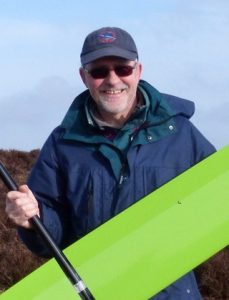 Jon Edison
Jon Edison
Born in North Yorkshire in 1946, Married with two children and four grand children. Educated in York before working for an optical instrument manufacturer in the City. Moved on to become a Project Engineer for the KitKat producer Rowntree Mackintosh, and later, as a Project Manager for Nestle, working on various projects throughout the UK. Following a period working for the German conglomerate of Mannesman Demag, and then NEXT Clothing, retired to York in 2002.
An enthusiastic modeller from an early age, having acquired a rather well worn DC Merlin in the late 50’s, setting me off on the modelling route of control line flying for the next few years as a member of York Model Aircraft Society. A brief diversion into to Slot Car Racing before returning to aircraft in the 70’s, as reliable Proportional R/C began to be available. Built the RCME Digital R/C equipment which was successfully test flown in a Dave Hughes Soarcerer. Having constructed and flown many types of model aircraft, a passion for Slope Soaring remained. After competing in a Slope Racing Competition in the 90's, I have been involved with F3F Slope Racing ever since.
Currently Chairman of the Silent Flight Technical Committee, Membership Secretary and Treasurer for the North York Moors Ridge Soaring Club, and a founder member and Chairman of the Great Britain Slope Racing Association
Hoping to bring an objective and constructive approach to the Silent Flight Technical Committee through skills developed over many years of working for large multi-national companies. The SFTC currently has a great team, which will of course continue the work of giving a first class service to the flyers it represents. Enjoying being involved with Model Flying, and contributing to its continued development.
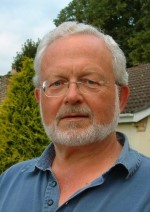 Chris Allen
Chris Allen
I have been fascinated by all aspects of aviation and studied aviation history for as long as I can remember. I started making models of aeroplanes and boats when I was about 10 years old. I learned basic metalworking and woodworking skills in school and with the encouragement of the teachers, I became interested in model engineering and building model steam and i/c engines.
I have dabbled in most aeromodelling disciplines and learned to fly R/C as a member of Lee Bees club in the 60’s. It was with the encouragement of the late great Eric Coates and a visit to the first Scale World Championships at Cranfield in 1970, that I developed an understanding that building and flying accurate scale models and the pursuit of realism is the ultimate challenge in aeromodelling.
I completed a five year aircraft engineering apprenticeship at the Royal Naval Aircraft Repair Organisation in 1965 which became the basis of my professional life in the world of military aviation with the MOD. Starting as a flight test engineer I climbed the promotion ladder specialising in Avionics, Instrumentation and electronic warfare until taking early retirement as an aircraft Project Manager in 1999.
I was invited to judge R/C scale at the UK Nationals in 1977 and have been active as a scale judge ever since. I was nominated by the BMFA as an FAI F4C Judge in 1994 and have judged at many Continental and World Championships including serving as Chief Judge on several occasions. I also judged at Topgun in Florida for 7 years.
After the death of my wife in 2006, my plan to retain my sanity was to focus on competing in R/C scale. This idea was effectively put on the back burner by being co-opted onto the BMFA Scale Technical Committee where I have been a member ever since. I also took up the cudgel of sorting out the mess that was the FAI F4 Sporting Code, which is finally yielding results.
I am Currently a member of the FAI F4 Scale Sub-Committee and Chairman of the BMFA STC and was honoured with a Fellowship of the SMAE in 2021.
Apart from my interest in aviation and its history I also enjoy photography, cooking and caring for my dog Biggles.
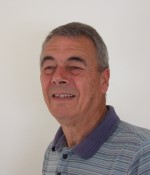 Anthony Hebb
Anthony Hebb
Born 9th March 1947, Maths and Science A levels. 3 years in Police before career spanning 30 years in IT.
Aeromodeller from age 7, interested in most disciplines, represented GB on F1D team since 2013.
 Andy Ellison
Andy Ellison
Have been aeromodelling for 50 years from the age of 6, beginning in free flight through control line then R/C Power and Slope Soaring. I am the President of the award winning Tyldesley Model Flying Club in the North West Area, and hold the positions of North West Area Chief Instructor and Chief Examiner for fixed wing and silent flight. Events Coordinator for the Jet Modellers Association, Short Course organiser for the BMPRA and Chairman/Delegate for the BMFA RC Power Technical Committee. I also Organise and run the Freestyle Masters Competition for both fixed wing and helicopters and mentor the Team Renegade display team.
I enjoy flying many different types of models from Fun-Fly to Scale, large or small, radio to free flight, indoor or out, but it is on the UK slopes that I feel most relaxed in my flying. In essence I am a sport flying Aeromodeller, and my extensive experience has seen me drawn into voluntary roles inside the political side of Aeromodelling both at club and national level where I am opinionated, open, frank and honest.
I am a past BMFA North West Area Committee Secretary, Newletter Editor and P.R.O. I am an ex member of the BMFA Achievement Scheme review committee, and ex Chairman of the BMFA Accident investigation committee.
I served as Secretary and Council Delegate for the RC Power Tech Committee for eight successive years and in this role represented the BMFA specialist bodies and all R/C Power sport fliers directly. The reformation of the RCPTC allowed me to pick up this role once more which I continue to do.
I regularly visit model clubs lecturing on noise reduction, the Achievement Schemes, Aerodynamic Trimming, composite modelling, Dynamic Soaring and other RC related topics and in addition to display flying at major model shows for various sponsors I participate in a little indoor flying, Control line and free flight as well as shooting aerial photography from Multi-rotor aircraft. On occasion I have been known to judge Free Flight Scale competitions and International Miniature Aerobatic Club (IMAC) competitions, dabble in helicopters and Autogyro’s and for fourteen yers wrote freelance for the UK’s largest model flying magazine Radio Controlled Models and Electronics, writing a regular Slope Soaring column, kit reviews and advice articles for novices and experienced fliers alike.
I have represented both England and Great Britain in international model aircraft competitions and have competed in world championships for my chosen competition disciplines with good results alongside running the UK F3F and 60” soaring league from 2006 to 2009. Additionally I still hold a number of British aeromodelling records.
 Peter Disney
Peter Disney
Peter currently lives in Brixham, Devon and is a Lieutenant Commander in the Royal Navy. He was educated in Torquay and at Imperial College, London and joined the Service in 1982 as a Seaman Officer, passing out from BRNC in 1983. After Fleet training and professional courses he moved on to be the Navigating Officer of HMS Kirkliston and then HMS Bereton before commencing flying training as an Observer in 1989.
Initially qualified on the Lynx Mk3 helicopter operating from Frigates and Destroyers, he held several appointments with 829, and 815 Naval Air Squadrons as the Flight Observer and then the Flight Commander including operations in the first Gulf War and the Mediterranean. In 1994 he became a Qualified Observer Instructor training Lynx Aircrew and as serving as the Operations Officer of 702 NAS based at RNAS Portland. After a final appointment back with 815NAS as the Type 23 Senior Flight Commander in HMS Somerset deployed to the South Atlantic he joined the Staff of Flag Officer Sea Training at Devonport in late 1997 as a Staff Warfare Officer conducting Aviation training at sea for RN and NATO warships.
In 1999 he returned to flying duties and completed a conversion course to the Merlin (EH101) helicopter at Westlands in Yeovil. The initial cadre of aircrew were based at RNAS Culdrose and charged with bringing the Merlin into Service and establishing the Merlin Training System which became 824 NAS later in 2000. As a Merlin instructor with specific responsibility for developing and accepting the simulators into service, he worked very closely with CAE, the contractor, in Canada to validate software and hardware and then oversaw the subsequent installation at Culdrose.
In 2002/2003 he was employed as the Senior Operations Watch-keeper working with the Coalition partners at the UK National HQ in Qatar for the war-fighting phase of Operation Telic in Iraq. On return to Culdrose and the Merlin he became the Senior Observer in 829 NAS, re-commissioning the Squadron in 2004 and using his Lynx sea experience in establishing links between the parenting organisation and the frigates. Since 2009 he has been back with FOST in Devonport training ships at sea.
Having started his modelling career with control line flying as a teenager in the 70s his first model was a Kiel Kraft plastic Hurricane. He progressed to built-up models and some free flight ducted fans, but drifted away from modelling when he went to college.
Returning to the hobby and R/C power flying in 2000 when he joined the Culdrose Model Flying Group, he became the Chairman of RNMAA and BMFA representative in 2007. In addition he is now also a member of several clubs in Devon and Cornwall and has been involved with the Devon and Cornwall Sub-Areas since 2009. He has held fixed wing ‘A’ Certificate since 2002 and was invited to fly before the full size aviation at Culdrose Air Display in 2006, so worked-up and successfully passed the ‘B’ that summer. He flies mainly larger R/C scale and semi-scale fun fighters at the summer shows, but is also very keen on EDF models, having designed and built several models of British aircraft from the 50s and 60s. He also dabbles in electric R/C (up to 200W size motors), rocketry (up to E Impulse) and indoor helicopters.

Keith Lomax, FSMAE
Keith served as Honorary Treasurer from 2003 until his election as Vice Chairman in 2022. Prior to that he was Area Delegate for the East Anglian Area in 1991 and BMFA Honorary Secretary from 1991 to 1996. He has also held committee posts at club and area level. He has undertaken various roles in relation to the Power Nationals including being coordinator in 1992 and famously running the bar from 1994 to 1998; helped out at the Free Flight Nationals for four years; manned the BMFA stand at many shows; and initiated the children’s DART workshops at the Model Engineers Exhibition.
Keith is married to Christine who also works at the Nats and on the stand, and has three adult stepsons (who also all work at the Nats, usually on the roping crew). Keith and Christine also have two dogs (George and Holly) who are known to quite a few members.
Keith’s model flying activities started with R/C Power fixed wing ‘club’ flying and have included indoor and a very poor attempt at scale.
Other interests include canal boat holidays, photography and anything to do with maintaining a house and the stepsons’ cars. Keith is a governor of a school for children with special educational needs.
When he has time to go to work, Keith is an internal auditor (like an accountant but more friendly and interesting) and specialises in auditing computer systems. Having worked for various multinationals, Keith currently works at Motability Operations, the company that operates Europe’s largest car fleet – providing a service to over 400,000 disabled people in the United Kingdom.
